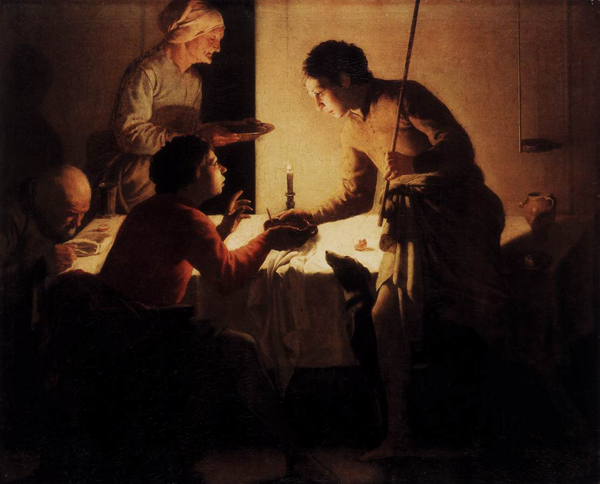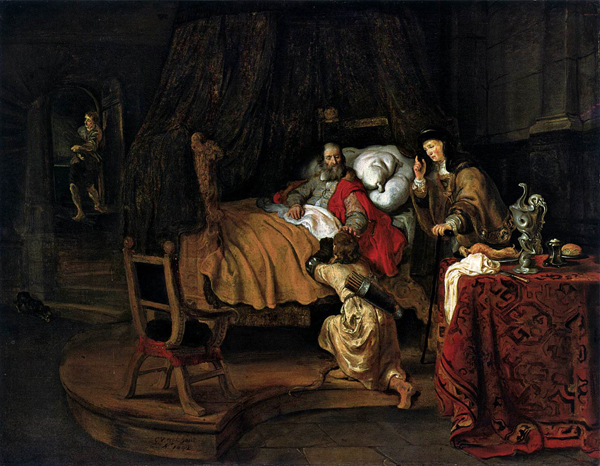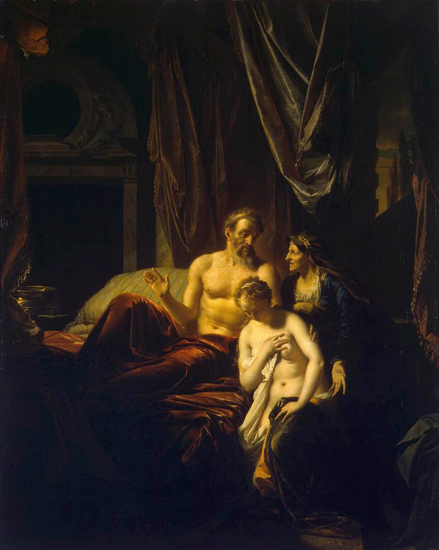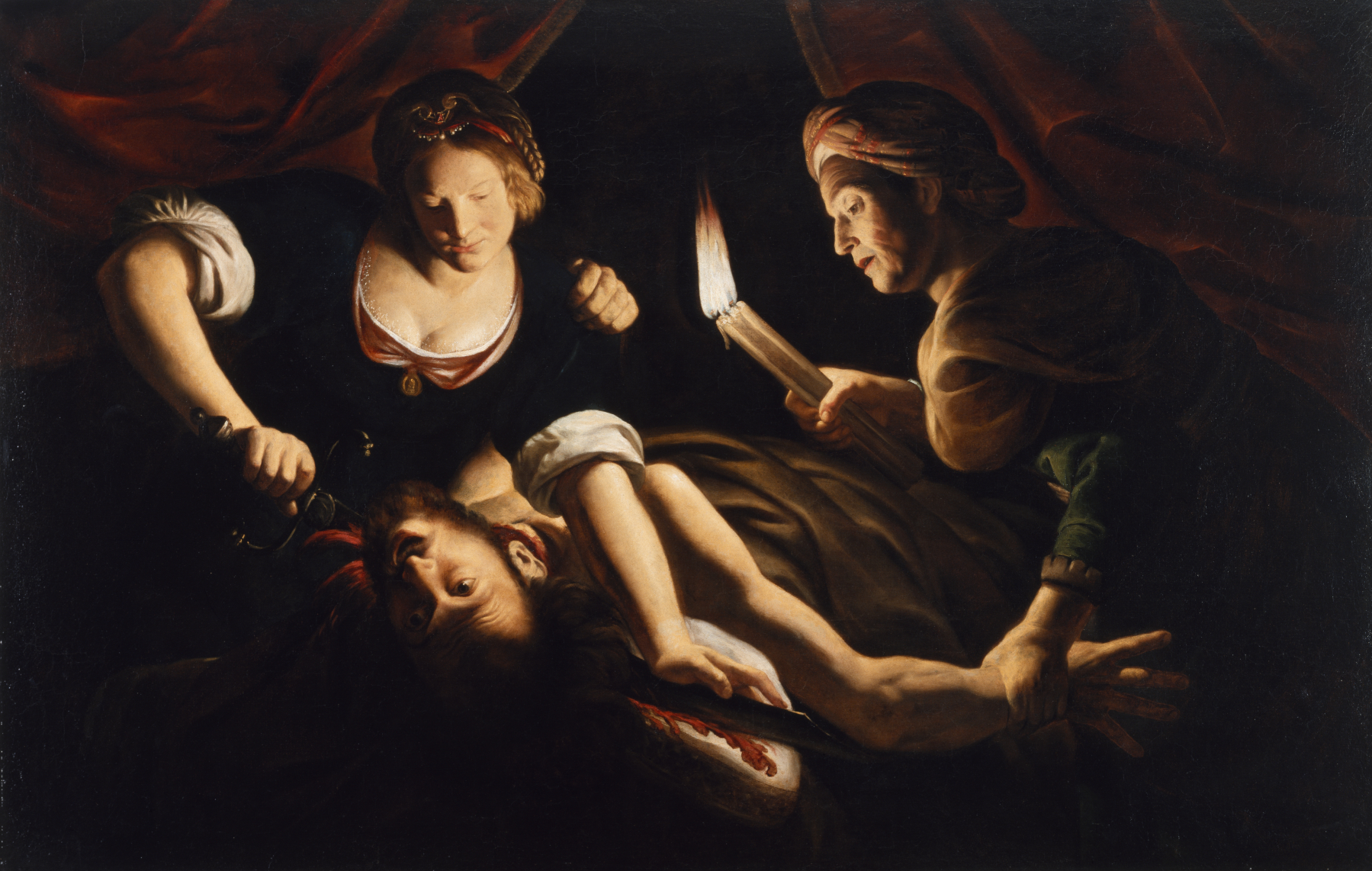We are still in the early chapters of Genesis, and we have visited the theme of ‘brothers’ several times already. We’ve talked about Cain versus Abel, we’ve looked at the trouble among Noah’s three sons, and we saw what happened between Isaac and his step-brother Ishmael. The favorite versus the outcast. The chosen one versus the cursed one. The younger versus the elder. And now we come to the story of twin brothers: Jacob and Esau. Just like the previous generation, this tale of two brothers turns out to be a story about a mother and her son.
Jacob and Esau were opposites. Esau, the elder twin, was a hunter and a wanderer, while Jacob, the younger twin, was quiet and stayed close to home. Their father Isaac favored his elder son because he intended to bless Esau with the birthright he inherited from his own father. Their mother Rebekah favored her younger son because God had told her that Jacob would inherit.
It has become clear that in each generation, God has already decided who will go on to the next round. In Abraham’s generation, God told Abraham to send Ishmael away so that Isaac would be his sole heir. In Isaac’s generation, God told Rebekah “Two nations are in your body. Two tribes that are now inside you will be separated. One nation will be stronger than the other. The older son will serve the younger one.” Genesis 25:23. We all know that God’s words become true: Jacob goes on to become the patriarch of the twelve tribes of Israel while Esau fades in to obscurity. But how did it happen?
In Hendrick Terbrugghen’s painting Esau Selling His Birthright (above), we see a familiar family scene: mom bustling around to get dinner on the table, brothers arguing just to argue, and dad tuning out the noise with his nose buried in a book. But this is no ordinary moment. In this scene, Esau has just come in, famished after a long day of hunting, and he demands the meal that his brother has before him. Jacob said “First sell me your birthright.” Genesis 25:31, and Esau says, “fine, whatever, just give me your food.” This scene illustrates that Jacob had his eyes on the prize, while Esau was completely indifferent to their father’s inheritance.
Jacob may have secured a promise from Esau, but it was still Isaac’s blessing to give. When the aging Isaac decided that it was time to offer his blessing to his eldest son, he sent Esau off to hunt and prepare his favorite meal. Rebekah seized the opportunity, and quickly implemented a shrewd plan to trick Isaac into giving his blessing to Jacob instead. She told Jacob exactly what to do, and he obediently followed her instructions. On Rebekah’s orders, Jacob fetched two goats for his mother. She prepared a meal for Isaac, wrapped Jacob’s smooth arms in goat skins to disguise him, and sent him to Isaac in Esau’s place. (Genesis 27)
Govert Flinck’s Isaac Blessing Jacob (right) shows Isaac performing the fatherly responsibility of blessing his heir, while Jacob dutifully follows his mother’s orders and accepts his frail father’s blessing. Rebekah watches closely to ensure that it works out as she intended, as God had told her it would. In this key moment, Jacob’s future was decided as he inherited God’s covenant with his grandfather Abraham. And Rebekah made it happen.
The story of Isaac blessing Jacob is a fascinating interaction between a father and son who were most likely alone for this occasion. But many artists made the interesting choice of including Rebekah in this scene. Although she was probably not present, she was a key player in the story, and any scene of Isaac Blessing Jacob is incomplete without her.
Rebekah wasn’t the first to intervene when it came to the matter of inheritance. In the previous generation, God had said that Abraham would be the father of a great nation, and after many childless years, Sarah took matters in to her own hands and sent her maid Hagar to her husband to ensure that he would father a child. God had made his plan clear, and while Abraham waited for God’s promises to be fulfilled, Sarah took the necessary steps to make it happen.
When Adriaen van der Werff painted the scene of Abraham and Hagar, he also included a third person, Sarah, who was most likely not present for this moment. Both artists recognized that these scenes would be incomplete without the interventions of Sarah and Rebekah, and they depicted the matriarchs orchestrating these key moments in person.
The paintings above show intimate scenes at the bedside of an old man, where his wife conspired to set her plan in motion, and his son passively accepted the outcome. Adriaen van der Werff’s Sarah Bringing Hagar to Abraham depicts the bedroom of the aging Abraham, where his wife conspired to set her plan in motion, and her maid passively accepted the outcome. In these scenes, Sarah and Rebekah oversaw pivotal moments in their stories, and ensured that God’s plan came to pass.
But were Sarah and Rebekah right to take matters in to their own hands? Are they the heroes of these stories for ensuring that God’s plans came to pass, or were they faithless and impatient that God would do as he said he would?
I’m going with option #1 on this one. Sarah and Rebekah understood that God helps those who help themselves, and that it is our responsibility to act rather than to wait and see. They are worthy of praise and gratitude for acting wisely and selflessly in pursuit of God’s chosen path.
So Rebekah is a the hero of this story, but is she also a sneaky trickster? I’m proud that my biblical namesake was chosen to be Isaac’s wife because of her kindness and generosity, not for her beauty or wealth, but where are those admirable traits now? Rebekah may have done the right thing, but she did so by resorting to deceit and trickery. She deceived her own husband by taking advantage of his weaknesses, and she used their son as a pawn in her deception. Would you use your child to trick your spouse? Don’t answer that.
Perhaps artists such as Flinck, Eeckhout and Werff included Sarah and Rebekah in these scenes not just to illustrate their essential importance to the story, but also to depict the matriarchs as conspirators and manipulators. The intimate bedroom scenes above are eerily reminiscent of common depictions of Judith and Holofernes, such as Trophime Bigot’s (right), where Judith decapitates Holofernes at the eager urging of her maid. In scene’s like this, the viewer’s attention is drawn not to the heroic act of salvation, but to the acute terror at the realization of being had by meddling women. In Bigot’s scene, he did the same as the artists above by imagining Judith’s maid as part of the action, rather than outside waiting as in the real story. In this context, we might take a second look at the scenes of Sarah and Rebekah above, and think of the supposed lesson that men should learn from the story of Judith: women cannot be trusted.
There’s no winner in the story of Isaac, Rebekah and Jacob. The younger twin received his father’s blessing, but then he had to run away from home to avoid his older brother’s wrath. Esau went on to continue to marry foreign women just to spite his parents, and we never hear from Isaac or Rebekah again.
Will the pattern continue with the next matriarchs, Rachel and Leah? Keep an eye out for upcoming articles!





